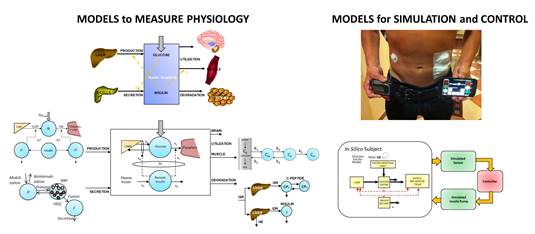C. Cobelli, C. Dalla Man, M. Pedersen, A. Bertoldo, G. Toffolo, University of Padova
Volume 61, Issue 5, Page:1577-1592

The glucose story begins with Claude Bernard’s discovery of glycogen and milieu interieur, continued with Fredrick Banting’s and Charles Best’s discovery of insulin and with Rudolf Schoenheimer’s paradigm of dynamic body constituents. Tracers and compartmental models allowed moving to the first quantitative pictures of the system, first, using analogue models (hydrodynamic and electrical), then analog and, later, digital computers. These early attempts are reviewed and the landmark modeling work by Charles Sheppard and Mones Berman is highlighted. The glucose regulation system has stimulated important developments in terms of modeling methodology, including the theory of compartmental models, a priori identifiability, parameter estimation both in a Fisherian and Bayesian context, optimal design of identification experiments and validation strategies. Three classes of multi-scale models are discussed with respect to their historical contribution to advancing the understanding of the pathophysiology of diabetes with an eye to the future: models to measure, models to simulate and models to control. Models to measure are minimal, parsimonious (coarse grained) descriptions capable of estimating crucial processes of glucose metabolism, e.g. glucose and insulin fluxes and insulin and glucose control indices, both at the whole-body and tissue level. Maximal, large-scale (fine-grain) models are needed for simulation, e.g. to test theories of insulin signaling and insulin secretion. Of note in this context is the type 1 diabetes simulator accepted in 2008 by FDA as a substitute for animal trials which has been intensively used by several groups in academia and by companies active in the field of diabetes. Models are also crucial in modern control strategies for closed-loop glucose control (artificial pancreas), e.g. model predictive control relies on prediction of glucose dynamics based on a model of the patient. Since 2008, also thanks to important improvements in glucose sensing technology, there has been an acceleration towards a wearable outpatient artificial pancreas. We review successes and trends. Diabetes has a large socio-economical and personal impact: modeling at various scales can tremendously help in improving diabetes understanding, treatment and management.

